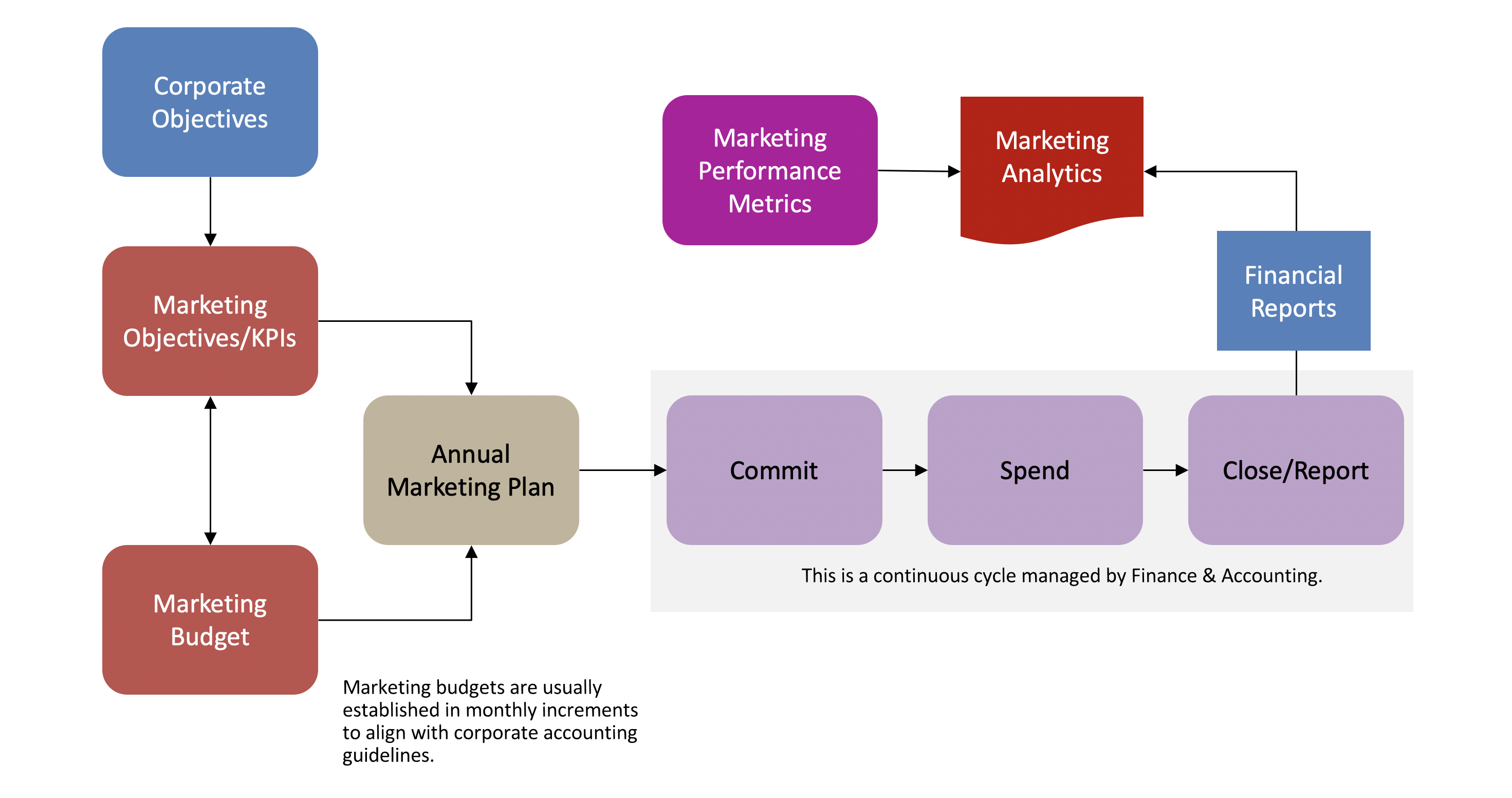
IF marketing gets financial information in the form that marketing requires, THEN marketing can begin to explain the cost of achieving the company’s revenue goals. From that, it’s a short step to explaining ROI of marketing investment. In most cases today though, we’re still talking about a big IF.
What needs to happen? A company’s ERP (i.e. Oracle, SAP, Microsoft, Netsuite) and marketing’s work management solution (i.e., Adobe Workfront) need to be integrated to enable effective planning and management of the financial investment that supports achieving the annual marketing plan.
Traditionally finance has reported to marketing how much was spent (e.g. $2.8 million for the month/quarter/year). But what marketing really needs is granular information. How much was spent on webinars? How many attendees were there? How many converted? How much did we spend to market to major accounts? The list of questions is long, and until recently, getting the answers took hard manual work.
A general ledger in an ERP, for example, may have a single line item for “agency costs.” A marketing budget for a large enterprise could have 20 or more items that fit in that category—for just one quarterly campaign. There’s not enough itemization in the ERP to be meaningful to marketing from an analysis and reporting point-of-view.
An additional drawback to this “before” picture is that marketing generally thinks in terms of projects, while most finance organizations think in terms of accrual accounting. The difference between the two can lead to painful learning experiences on the part of marketing around how much of their budget remains.
Until now, the structure of marketing budgets hasn’t been compatible with the structure of most financial systems (ERPs). Marketing’s need for more finance detail is a function of its fluid, iterative nature and project orientation.
Since the information marketing requires isn’t available through the ERP, marketing operations team members have painstakingly tracked project budgets via Excel—which until recently was the only way to make connections between the marketing plan, the financial system, and marketing performance metrics.
By adding a marketing performance management (MPM) solution (i.e., Allocadia) coupled with an iPaaS solution (i.e., Adobe Workfront Fusion), marketing can now more effectively manage the marketing financial process. Allocadia and iPaaS applications like Fusion are making the work of understanding what marketing spends more transparent. Fortunately for marketing this approach is a far more efficient way to get the information needed to measure and manage marketing budgets—making the work of understanding what marketing spends more transparent.
Integrated with the marketing work management solution, the ERP, and other Martech solutions via an iPaaS, MPM applications deliver the benefits marketing leaders have needed for years, including:

What has changed over the past several years is the availability of integration platforms (iPaaS) such as Fusion that link disparate applications. The ability to transfer and synchronize data between applications—MPM, work management, standalone martech apps—has become a critical necessity as the era of digital ops takes hold.
Adobe Workfront + Fusion helps marketing accomplish integrations not only with MPM solutions and the ERP, but with other standalone solutions. Fusion supports 150 APIs through a straightforward drag and drop interface. Fusion, Workfront’s iPaaS solution, will continue to transform the way marketing works.
Marketing plans from a program standpoint. Accounting needs data from a finance point-of-view. Zee Jay Digital helps bridge the gap, so both organizations get information required to manage their digital operations—and benefit the enterprise as a whole too.
Zee Jay’s transformation framework fills gaps left by other consulting firms, assuring both the business model and the customer experience are supported by the right marketing operating model—with the organization, operations and technology structures in place to compete in the digital age.